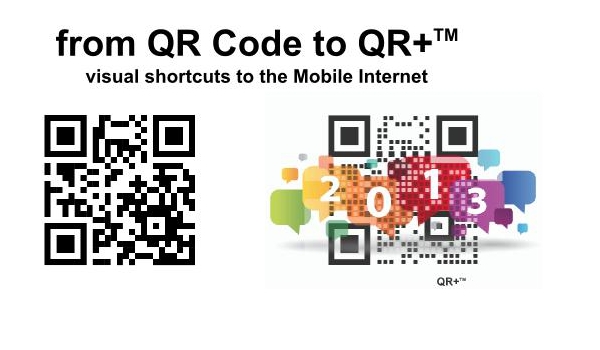No Matter The Mobile Technology, Extend Your Product Packaging To Engage Customers
My colleague Reineke Reitsma recently published a blog on the limited but growing uptake of QR/2D barcodes.
Let’s face reality. Usage is low and marketing execution is poor to date, with too many campaigns that lack a clear consumer benefit and that provide a bad user experience by not offering mobile-optimized content. Today, mobile bar codes are an interesting tactic to engage with early adopters.
However, moving forward, we expect QR codes to gain traction and to be increasingly mixed with other technologies (including radio technologies like NFC) to provide extended product packaging solutions. Bar codes do not have to be just cold, emotionless, black-and-white squares. Solutions now exist to personalize QR codes’ designs and seamlessly mix them into a logo or band chart – even merging QR codes and NFC tags, as in the example below from mobiLead solutions.
The 2D bar code market will follow the same path as the 1D bar code market: fulfilling the need for certified and scalable platforms dealing with millions of standard code generation. Mobile bar code vendors will have to move into scalable mobile engagement platforms, progressively integrating multiple access technologies, such as Near Field Communications (NFC) tags, image recognition, or audio tags such as Shazam, and offering deep analytical tools. Beyond the emerging role of 2D bar codes in sales, we expect a growing number of brands — especially in the nutrition and health space — to systematize the use of bar codes on product packaging. Consumers want access to more product information, and brands can leverage mobile technologies to create a consumer relationship.
In the long term —1D, 2D bar code technologies coupled with other mobile technologies will link together the entire logistics chain, the payment systems at the point of sale, and branded catalog products. This phenomenon will raise new questions: Who is legally responsible for the information provided digitally via extended packaging technologies, the brand or the retailer? Beyond the legal issues, we expect new mobile technologies to redefine the governance between brands and retailers.
Before deciding to scale the use of extended product packaging tactics, marketers should:
· Closely monitor the efficiency of other QR code campaigns. You may have a clear mobile strategy, great results from your initial mobile bar code campaigns, and a best-of-breed approach to leveraging QR codes. All this will be in vain if other brands — whatever the industry — continue to do a bad job of using the technology by not providing relevant mobile-optimized content. In short, consumers will stop scanning bar codes if they don’t get used to receiving clear benefits and seamless user experiences. Marketers still have to wake up on how to implement efficient campaigns, and that’s why you need to monitor usage closely before scaling the mobile bar code opportunity.
· Define contextualized and mobile-ready content, regardless of how consumers access it. Different technologies (e.g., NFC, QR codes, image recognition, augmented reality, etc.) enable consumers to connect to your brand via physical products. While we expect QR codes to scale more quickly, especially for lower-value goods, bear in mind that mobile technology is evolving continuously. This should not be a reason for a wait-and-see attitude. On the contrary, you should decide now what content to prioritize to offer specific and relevant product in a mobile context. Whatever the access technology, you need to build a gateway to your brand, providing relevant and up-to-date information on your values and products.
Clients who want to know more about QR codes in Europe and extended product packaging can download my report, “How Extended Packaging Will Redefine Relationships Among Brands, Retailers, And Customers” here.

